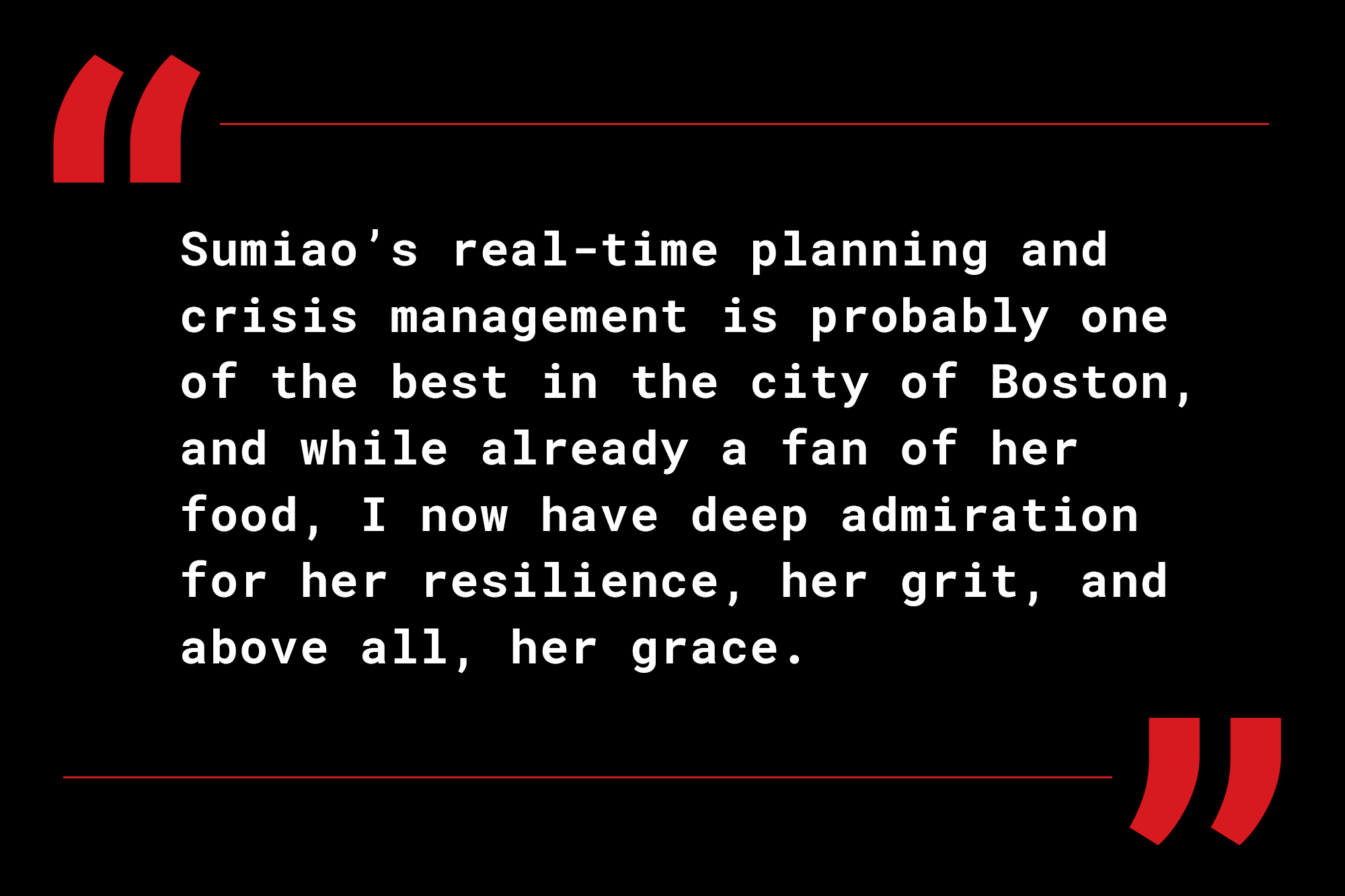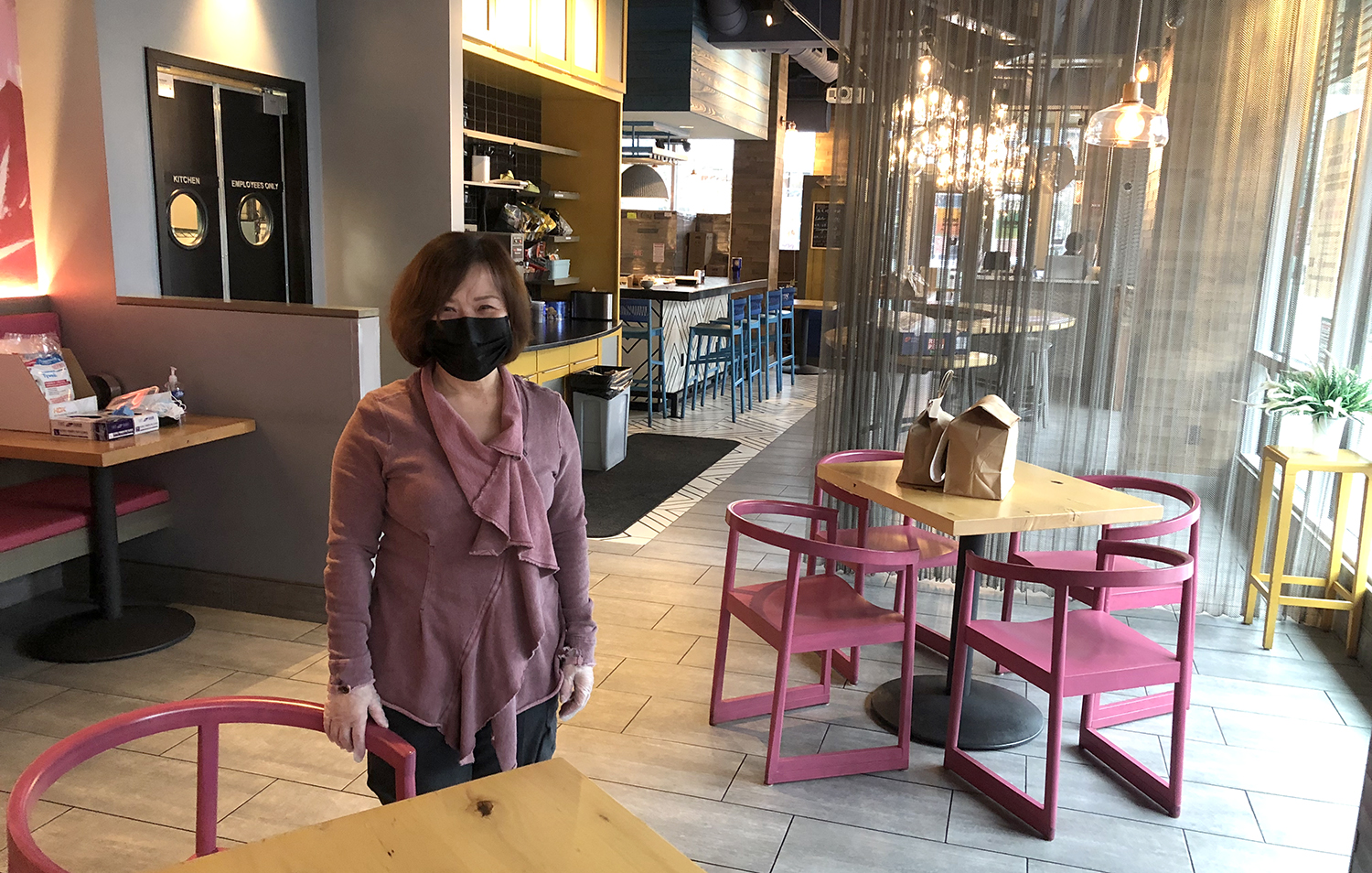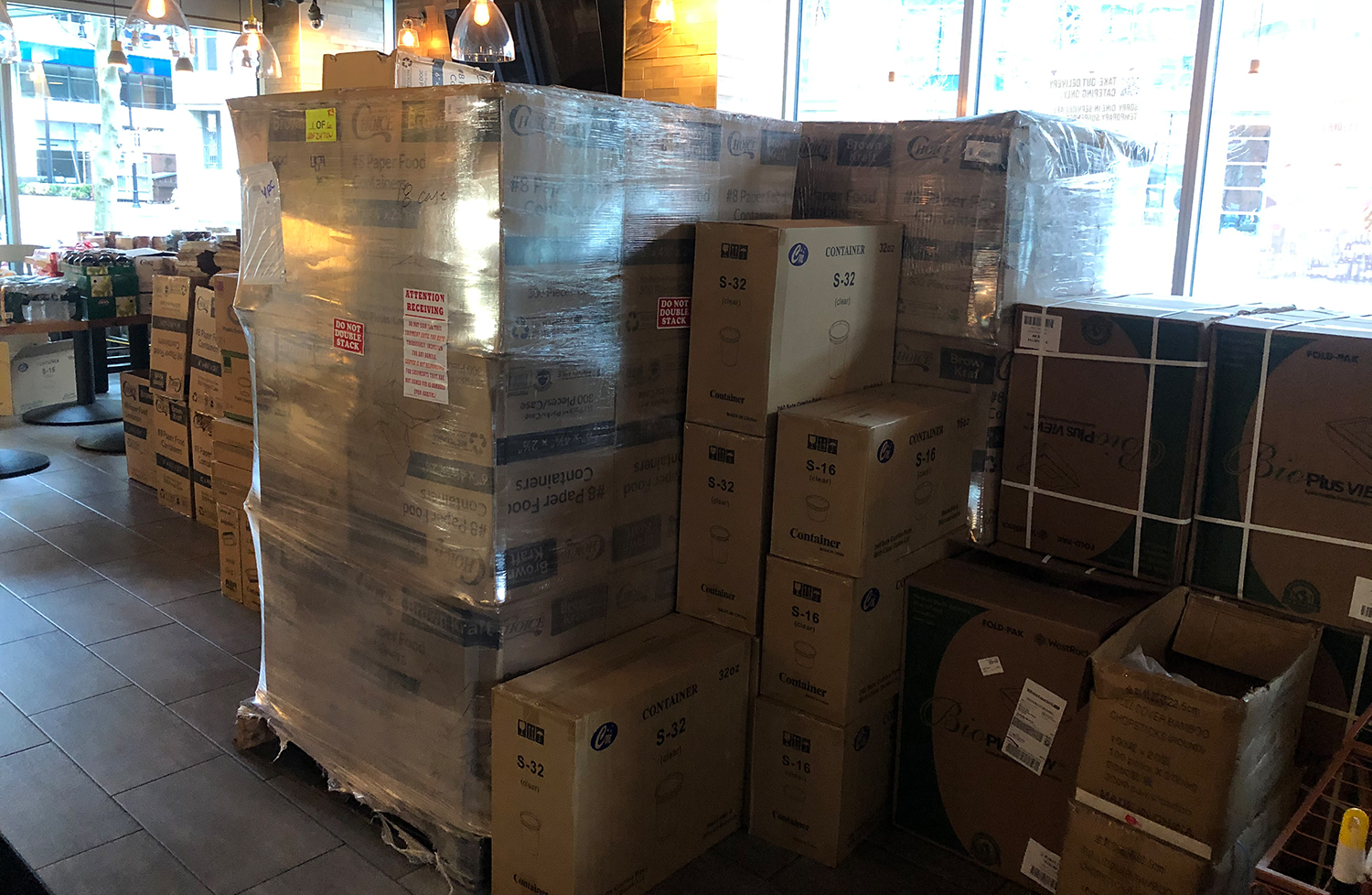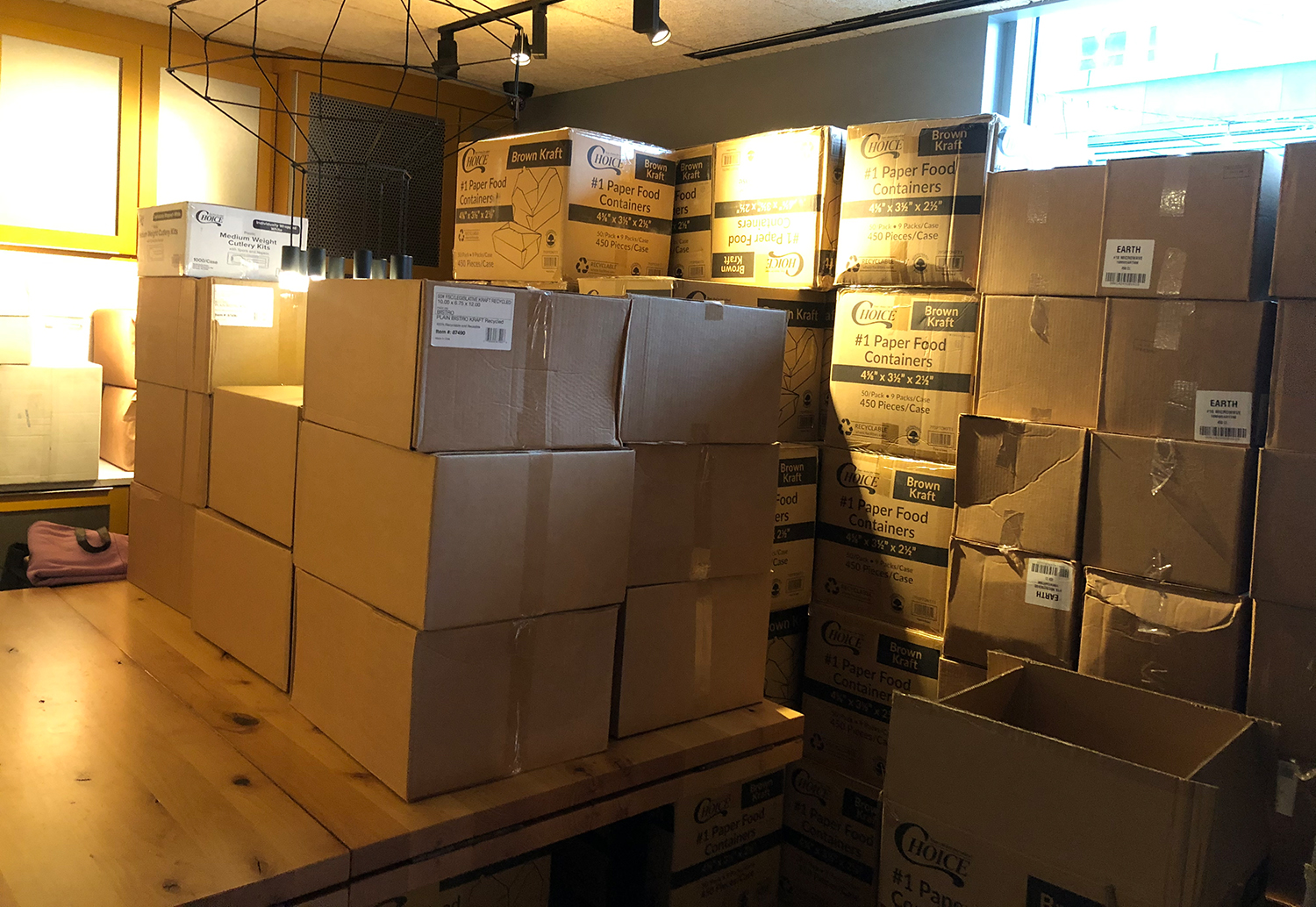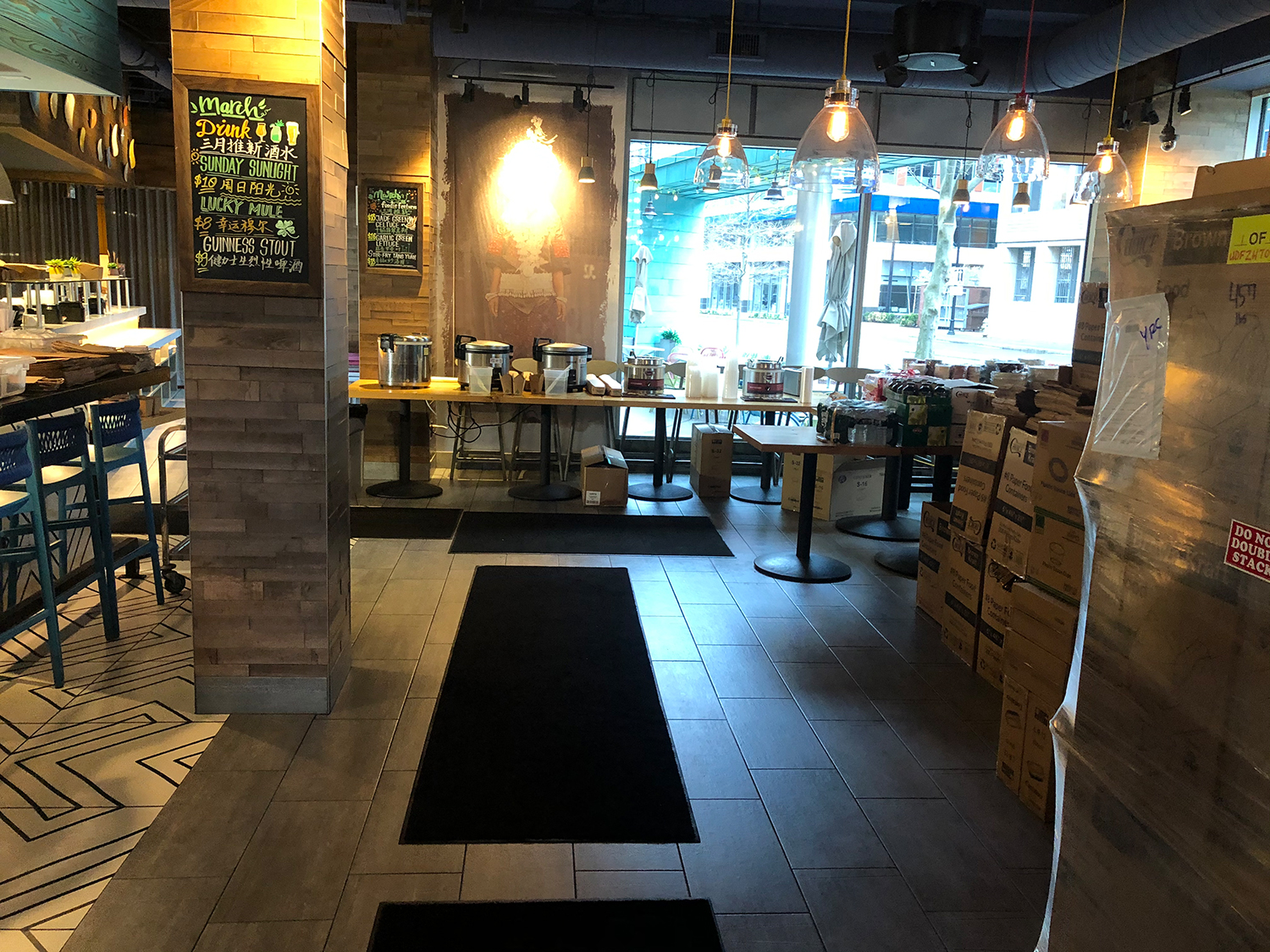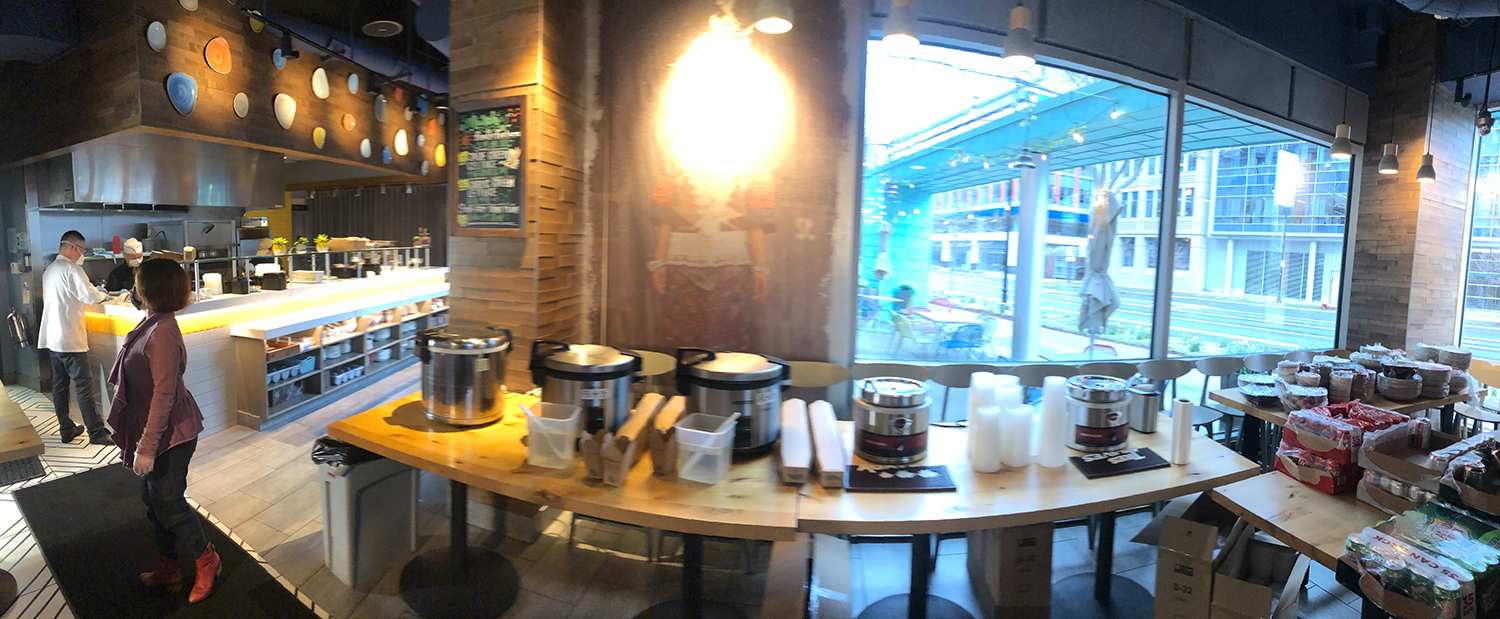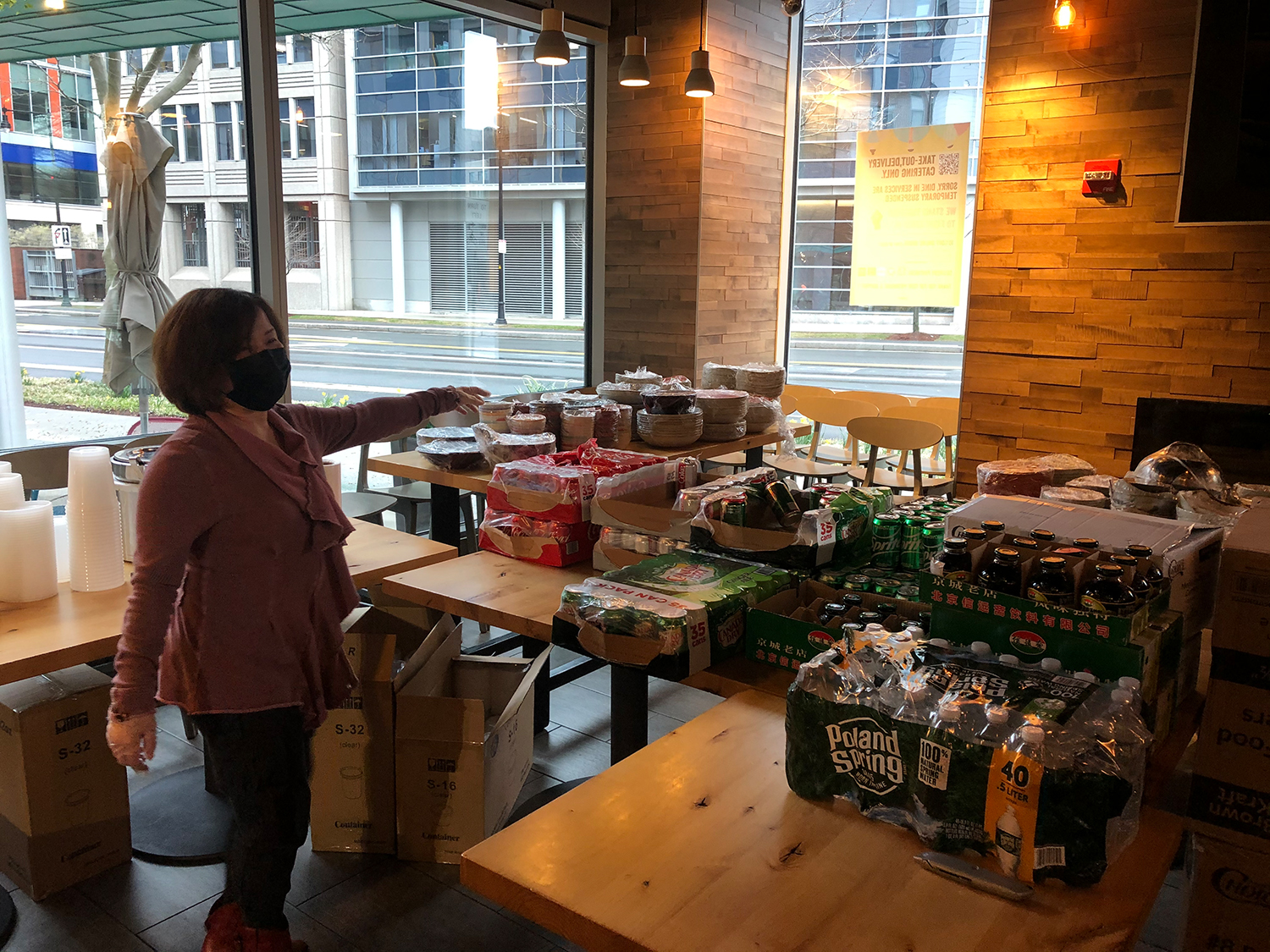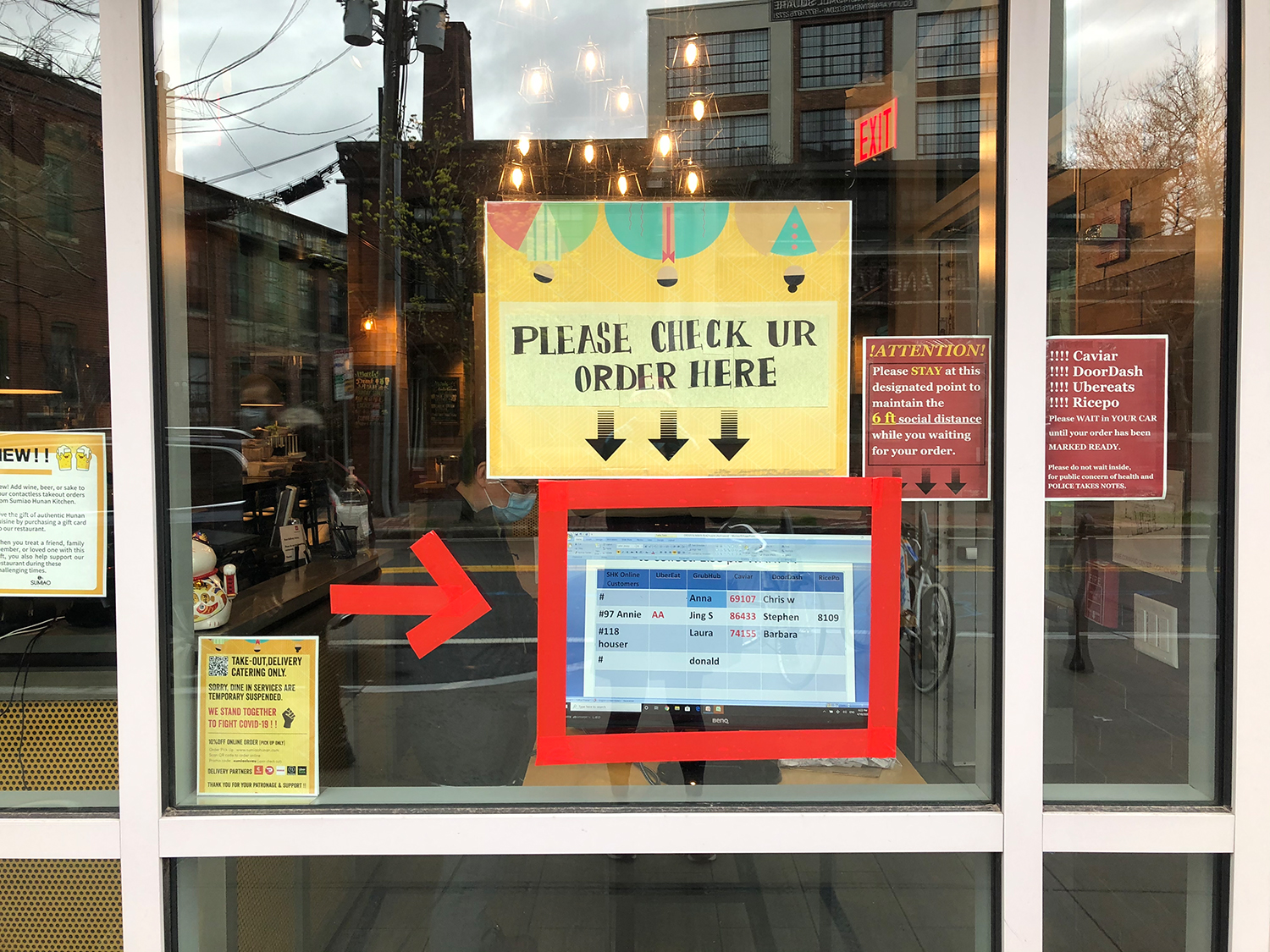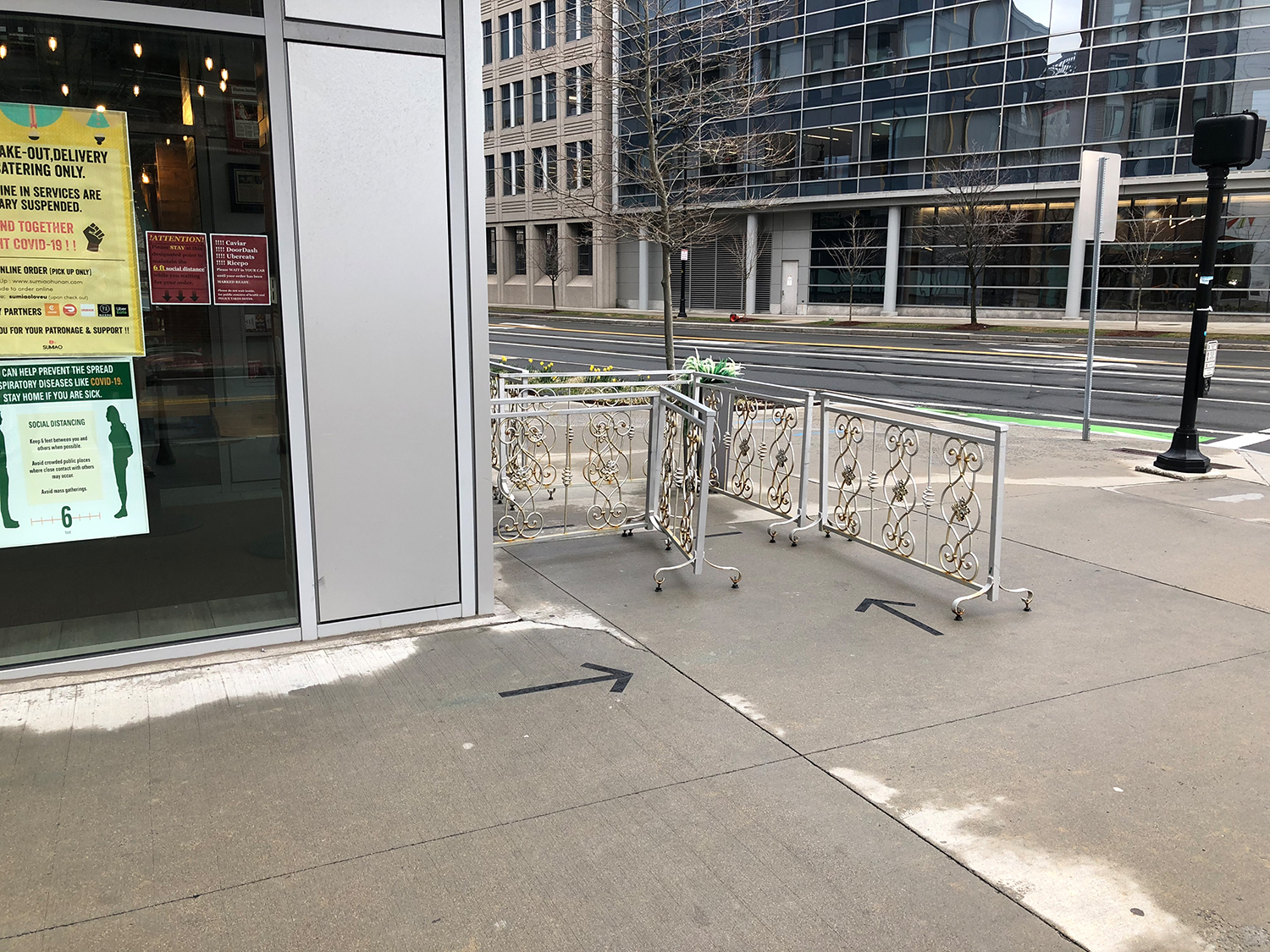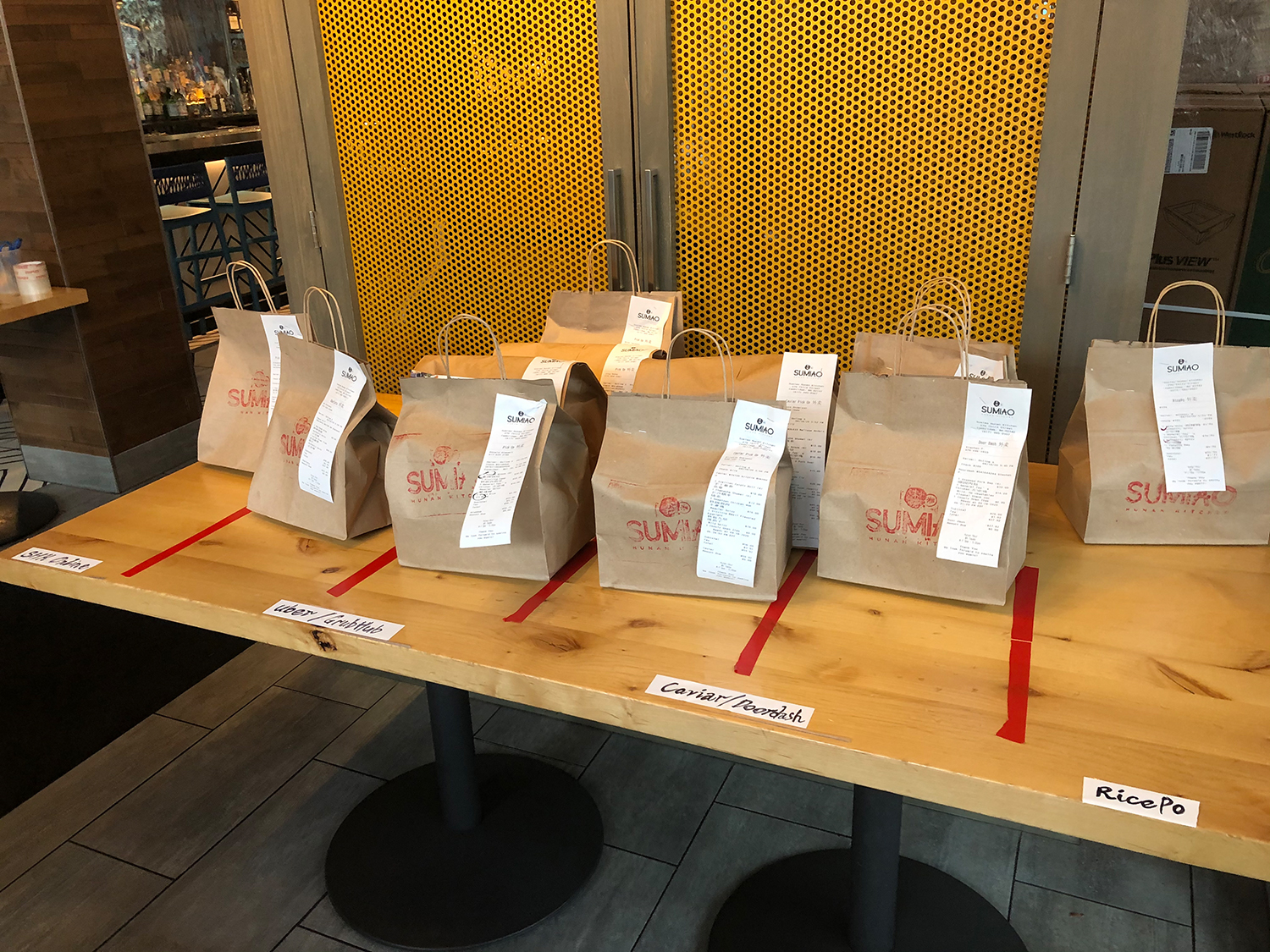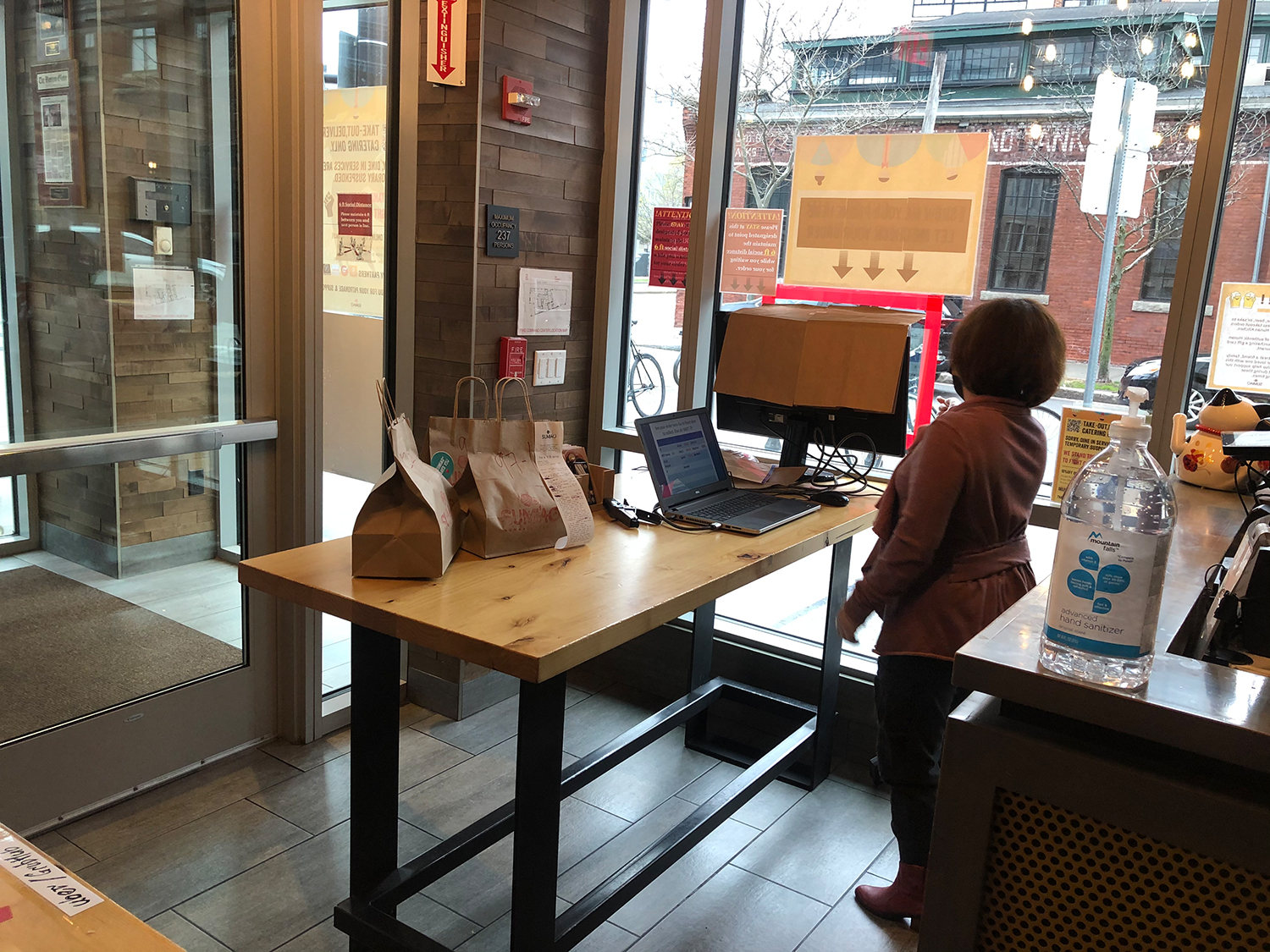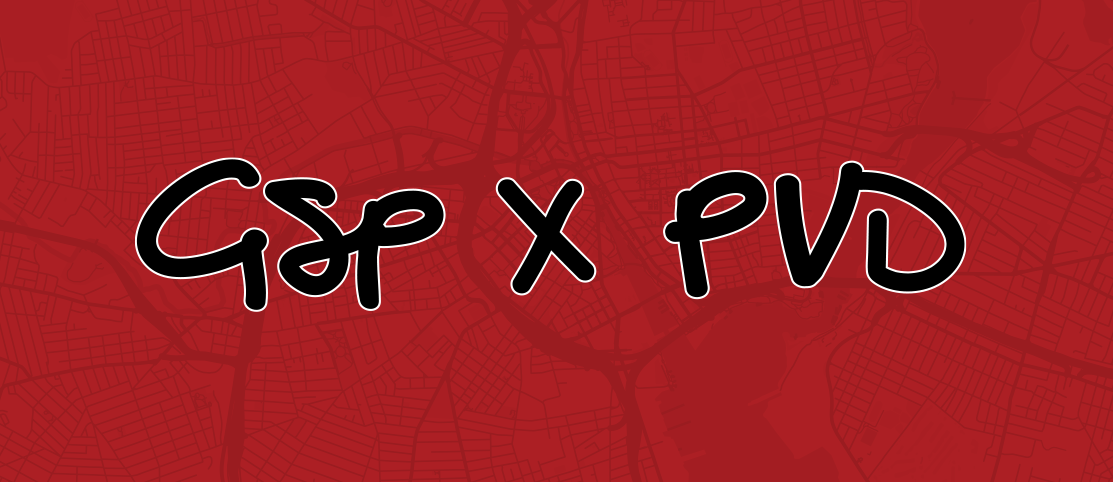Restaurant Retrofits Week 2: Sumiao’s Story
This week I’m doing a deep dive at Sumiao Chen’s namesake restaurant, Sumiao, in Kendall Square. Sumiao – both the woman and the restaurant – have an extraordinary story to tell, and I was grateful to have had the chance to spend over an hour with her at her restaurant on a recent cold and rainy night. Sumiao’s real-time planning and crisis management is probably one of the best in the city of Boston, and while already a fan of her food, I now have deep admiration for her resilience, her grit, and above all, her grace.
Below is a condensed version of our conversation.
When did you have a sense Boston was going to be significantly impacted?
There were a couple of key moments. I had actually traveled to China on January 22, as I was going to visit my mother in Xiangtan (Hunan Province, about 250 miles away from Wuhan) and to celebrate the Chinese New Year. When I arrived, I was in touch with some of my friends in Wuhan, where I had lived for many years while in medical school. These friends are now clinicians on the front lines in Wuhan. They were crying on the phone as they described how COVID-19 was devastating the city and overwhelming hospitals. Because of the virus, I decided to cut my trip short and return to the US on February 2. On my return flight, I connected through Chicago, and was expecting US officials to instruct me to self-quarantine. But when I cleared customs and immigration, I asked an official about what quarantine measures I should take, and he told me that no specific action was necessary. That made me extremely alarmed that travelers arriving in the US from China were being told to behave normally upon their return. I’m a scientist, and I knew this was not going to be a good situation.
What happened when you got back?
Right away I knew I wanted to do something for my community back in Wuhan. I had a meeting with my team, and we decided to start the noodles program[1]. This was early February. We also noticed that the open rate for our newsletter – which normally is about 14-18% – had tripled, which suggested that others were growing alarmed about the virus. I was also becoming increasingly concerned about the health and safety of my staff and the customers. We’re in Kendall Square and our customers come from all over the world, sometimes directly from the airport! I was noticing that some of our customers would even come to the restaurant with their luggage. I’m on the board of the Massachusetts Restaurant Association (MRA), and I raised my concerns during our meeting on February 24. The organization was already having conversations with government at that point.
When did you start making contingency plans for takeout and delivery only? What did that look like?
In early March is when we began making concrete plans. I organized a meeting of my partners and explained why I thought it was best to close the restaurant to diners and move to takeout only. There were some differences of opinion, but ultimately everyone agreed it was for the best. I immediately had a meeting with the staff to delegate responsibilities; someone was in charge of training staff for sanitization protocols, someone was in charge of restaurant logistics, of space planning, of updating the website, communications, etc. We notified our suppliers that first week in March that we’d be moving to takeout only, and we also stockpiled takeout containers, bags, and some key ingredients from China, not sure of how supply chains might be affected in the coming months. We changed our website to make it user-friendly for takeout only, and we contacted those with upcoming reservations to let them know they’d be cancelled. We watched videos on how to properly clean hands, wear masks, and disinfect the kitchen and bar. During that week, we provided masks for our staff to wear, but not everyone wanted to since masks weren’t yet common and some felt it may affect their tips if customers couldn’t see them smile. It took eight days to plan and get organized, but we were ready to go by March 11. We had made the decision to cease normal operations by March 15. That night – it was a Sunday night – after we had closed at 9:30, we had all the employees on hand to clean and disinfect the restaurant and reconfigure the space for our new protocol. We were up and running the next day for takeout only.
Have you had to lay off staff?
During that critical first week in March, we made the decision to lay off 80% of our staff (40 of our 50 employees) so they could collect unemployment. We have 20 staff in the back of house and 30 staff in the front of house. We tried to be as transparent and communicative as possible during the process. We hope to hire everyone back.
How are your staff that are working doing? Several of your staff have apartments above the restaurant ( i.e. they “live above the shop”); How has that affected business operations?
We’re very conscientious about making sure that the staff are not overworked. We actually reduced restaurant operations hours (11 am – 9 pm) so that we could ensure they had sufficient time to rest. It’s hard cooking at a wok for hours on end! We have two apartments upstairs where several of the cooking staff live already. They actually came from China – all single, without families – to cook in the restaurant. The restaurant has always paid their rent; it’s part of their compensation package. We have most of our current staff living upstairs, so they are social distancing together. It also means they can continue to work in close proximity in the kitchen.
I can’t help but notice all the takeout containers! When did you decide to order more? Is this all of them or do you have more? During that first week of March, we actually ordered $60,000 worth of takeout containers! We used to get the round containers and the black and white plastic containers for takeout, but I was concerned that they weren’t very environmentally friendly and wouldn’t stack as well, so we actually switched to getting more of the recyclable cardboard boxes. Our landlord has given us additional space in the basement of the building to store takeout containers. We can’t store food, but it’s been good to have that extra space for our takeout containers.
How did you transform your restaurant from a dine-in establishment to takeout only? Are there aspects of your space that are working well under the circumstances? Aspects that don’t?
I hadn’t ever thought about it before, but our restaurant is actually ideally suited to the current crisis! It’s an L-shaped restaurant with the main door at the bend of the “L.” That leaves space at either end for meetings, private dining space, etc. We have a back entry door that is connected to the lobby of the apartment building that has a small vestibule and is where staff enter. Here we supply hand sanitizer, gloves, and masks. One wing used to be for cocktails and conferences (C-section, where Sumiao and I spoke), and the other is for private dining (P-section). The P-section has been retrofit into a kind of staff lounge. The main dining room is where we’ve been able to set up a secondary production line for takeout. We have a station for appetizers and soups, and then a dedicated area for packaging to go bags. We have three doors to the kitchen from each of these areas which was designed to reduce traffic in the main restaurant space, but also works very well under these conditions. The thing that has actually been most challenging is the loading area, which is shared with the rest of the building (Sumiao is on the ground floor of a residential rental apartment building called Vivo; the other ground floor tenant is Orange Theory). The trash and dumpsters present a similar problem. We have been asking the vendors making truck deliveries to unload the boxes outside in the loading dock, while the staff remains inside. After they leave, we spray down the boxes and then carry them into the restaurant ourselves. What’s turned out to be useful is that we have an outdoor patio with sliding doors that we’ve been able to transform into a makeshift loading dock if need be.
How is pickup organized?
We had a learning curve the first week. Pickup was so busy that it was causing too much traffic and blocking the road. The police had to come! But now we have a video screen just inside the front window on Third Street that shows when your order is ready for pickup. We have a clearly marked path outside the building for pickup that directs people in a one-way loop to pick up their food from the entrance on Binney Street. There’s a manager at the front desk right next to the screen. When someone arrives for pickup, they can show their phone through the window and the manager can place their order on the table right at the open front door. Customers can pick up their food and continue on their way. It’s very efficient and contactless pickup. We also have a table where we organize food pickups for delivery companies, who pick up in the same way.
How is business these days? Are you making enough to sustain your staff and the restaurant?
Business is good. When we started planning to move to takeout/delivery only, we calculated that our goal was to make $8K/day. We didn’t feel like it was the time to be greedy, and our goal was to break even and hopefully make a little bit of profit.
Are you breaking even?
Yes, we are. The first Friday after we chose to move to takeout-only we actually did $14K/day in sales, our best day so far. However, our calculations were off because we didn’t take into account the high commission charged by the delivery companies. I’d say that we average about 40% directly online for pickup and 60% from one of the delivery companies, so they’re a significant percentage of the orders. We have partnered with five delivery companies (Grubhub, UberEats, Caviar, Doordash, Ricepo). We’re trying to incentivize people to order directly on-line by now offering a 10% discount for self pickup. It also helps that customers are now able to get beer and wine to go since the legislation was updated last week.
How have relations with your landlord been?
We have a good relationship with our landlord, and they’ve been very good during this process. They offered us a 3 month rent deferral, which we took.
Are people ordering different things off the menu these days?
Yes, they are! It definitely reflects a change in the clientele. While the number one dish is the same (Grandma’s pork), it used to be that people who dined in the restaurant, particularly on the weekends, treated it as more of a “destination dining” experience. These were Chinese families from the suburbs who came to the restaurant with their friends and families and were more likely to order more traditional dishes. We’re seeing a lot more orders for things like General Tso’s chicken, which reflects a clientele that is perhaps more American and local.
Anything else you want to mention?
First, we have an amazing partnership of investors in the restaurant, most of whom do not really have expertise in the restaurant business. They are doctors, scientists, IT professionals, etc. They have been so supportive throughout this all, doing whatever they can to help out. I feel very lucky to have such fantastic partners.
And second, communication is critical. I feel it is very important to share our experience through our email newsletters. We have a marketing contractor that handles our social media, but we do the newsletters and a lot of the other marketing collateral ourselves, which makes it much more personal and unique. I think our communication makes customers feel more comfortable, but also lets them know we are prepared and are setting the highest possible standard both for our customers and our employees, which I believe we have done.
Lastly, I just want to say thank you to my management and operations team. What they have done means so much to me, and hopefully to the customers, as well!
[1] Taken from Sumiao’s February 14 newsletter: “For the next eight weeks from February 16 to April 12, Sumiao will be offering Wuhan’s most famous street food, Hot Dry Noodles as a special addition and Beef & Egg Rice Noodles chosen from our regular menu as my way to show solidarity between my home province and the city that adopted me. On behalf of you and Sumiao Hunan Kitchen, all revenue from these two dishes will be donated to the Tongji Medical College Oversea Alumni Association (TJMCOAA). These funds will be exclusively used to help and support the local hospitals and clinicians in Wuhan. The small money represent our best efforts, love and support, including the strong solidarity.I hope that one day, when this virus is a distant memory, you will find the chance to visit Wuhan to sail down the Yangtze River, see the East Lake teeming with lotus flowers and surrounded by cherry blossoms, and climb the 2,000 year-old Yellow Crane Tower. And of course, have some Hot Dry Noodles. That’s the Wuhan I know and love.”
